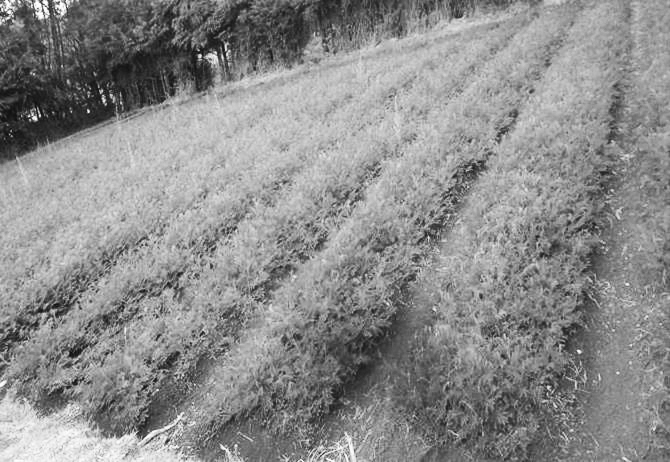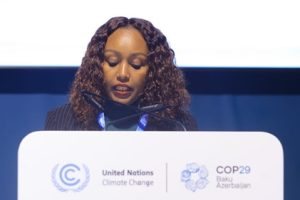
Ethiopia is one of the countries with a good geographical location, climate, and biodiversity. However, it has not benefited properly from its natural services economically and socially for a long time. The expansion of farm land and the settlement of people, as a result of increasing the number of population, have exposed the forest for clearing and deforestation.
Natural resources play important role to cope with the impacts of climate change by increasing ground and surface water. They also contribute for economic growth being a tourist attraction.
One of the key areas of the second Growth and Transformation Plan to sustain sustainable economic growth in Ethiopia is to align sustainable development with environmental security. The basic foundation of the Green Economic Development Strategy is to ensure food security by reducing emissions of greenhouse gases.
Therefore, forest resource conservation is a matter of survival that not to be laid for tomorrow. It requires effort from all sections of society and it is important to look at how much plans at the national level are being brought down to earth.
Dr. Belayneh Ayle, Executive Director of the Regional Environment and Wildlife Conservation Authority of Amhara National Regional State said that in the current situation, it would be useful to explore to which extent the environmental and natural conservation activities are taking place in the region.
According to Dr. Belayneh, Environmental conservation and protection of natural forests and licensing resource management of parks and forests are among the focus areas of the regional development projects.
Environmentally friendly projects that minimize pollution and deforestation are applied to avoid harm against the surrounding community.
Follow up on the projects being undertaken to safeguard the special interests of the community when displacing them as a result of creating convenient situation for the project. Following discussion with the community and upon confirmation of their agreement, a local validation license or certificate is issued to the projects. This year, more than 2,000 projects are licensed at the regional, zonal and woreda levels.
In order to minimize the licensing process at the regional and zonal level due to their nature of complexity, it is provided by weredas. Performance of projects that received Environmental Impact Assessment Certificate indicates that their disposal capacity of dry and liquid wastes and treatment of employees is audited, said the director.
He added that the corrective measures are being implemented with penalties. Nationally, according to him, a variety of projects from the federal up to wereda level are licensed based on the Forest and Climate Change Commission’s contract.
The Red Plan and Red Investment Program (ART) of Norwegian Joll Forrest Group and KFW are among the projects that stretched supportive hands to the environmental conservation. Generally, there are multiple environmental and forestry projects that are poured into over 55 municipalities in the region.
And there are three major works that the projects are expected to execute. These include forestry, land clearing and reforestation through involving local farmers in participatory forest management.
Dr. Belayneh said that creating awareness of the community is one of the main tasks of the environmental conservation. Environmental protection work requires effort from many communities. “If everyone cleans his/her respective area and the factories clean their work place by using different methods, the country would be cleaned,” he stressed.
He also explained that education focusing on environmental protection is being given to the community via radio, television, leaflets, and other means. According to the director, investigation is underway to find out the extent of environmental degradation in the case of special environmental events.
If there is a forest to be added to a park or a safe area after the study, they will discuss with the community and work accordingly. In this regard, most affected areas are being rehabilitated and the landscape is being transformed.
The Directorate is working to make a significant contribution to the conservation of the natural forests of the region. This is one of the restorations of the ecosystem. For instance, the caves of birds in the largest forests in the region, Alemsaga, Arada monastery in Guba Lafto District, South Wollo are protected. They are protecting large natural forests in the Awi zone by allocating the appropriate budget. These natural forests are largely contributing to protect climate change. They are used to make the ecosystem smooth for living.
Around 90,000 hectares of forest is protected in the region. The forests are protected by biodiversity and the ecosystem through diverting water from the rivers that are generating from the forests. If forests are not protected, there could be damage to the environment, Dr. Belayneh said.
“The amount of mangrove forests in the region is increasing. For example, if we look at the Awi zone, it indicates that 70 percent of the total land is covered by forest. This shows that the people are successful in forest-led economy.”
He noted that any beneficiary who buys the forest products will pay a royalty or development fee. Consequently, the state has collected over 100 million Birr from royalty payments in 2020 alone.
The money collected from these resources will be used for the development of the local community. Having these benefits of the forest in mind, the current generation is expected to preserve environment for further benefits of the coming generation, he said.
The strongholds in the region generally cover about 3 percent of the region’s total area. As a result, the plan, which is expected to cover 2.8 percent of the region’s total area, will be applied in protected areas and parks, he added.
There are about 11 parks and forests in the Amhara region. Among these are; Borena saynt, worehemenu, Wolka Abay National Park, Bakusa National Park, Godebea National Park, Abay River National Park; Abbot of Abune Joseph tight space for bean bag, Guna tight space for bean bag and the community’s Trinity Association tight space for bean bag are the main ones.
One of the core areas of the association is that the management is working on protection of wild animals from being slaughtered and killed. To monitor illegal wildlife trafficking in the protected areas, provision of universal services is underway to the local community to better protect them.
Coordinating the green economy strategy with the climate change is remedy for environmental protection. Every institution, in this regard, such as the Bureau of Agriculture, Animal Protection and Development Authority, Bureau of Industry and Investment and Urban Development Bureau are working collaboratively in ways that reduce climate vulnerability. To this end, support and follow-up works are underway.
The failure to comply with the obligations of the owners of industries and projects along with illegal activity in tight areas and parks particularly the expansion of the land invasion that is occurring following the changes is serious challenge. The failure of companies to implement the green economy strategy is also one of the major problems in this sector.
Overall, due to low awareness of the community towards environmental conservation and misuse of public waste like dumping plastic materials everywhere, high pollution is likely to occur, Dr. Belayeneh noted.
Less attention has been given to the sector for a long time. There are gaps in paying attention to the sector and structural problem when it needs to be prioritized by the government. The lack observed among the regional organizations is not confined to zones and municipalities, rather to weredas.
For the past 8 years, lots of jobs and coordinating a number of activities have been done. But an independent office has not been established. The Director said that the community’s contribution is important in the activities of protecting the Lake Tana. To protect the lake along with the environmental conservation, People need to be on government’s side as it requires financial, material, and intellectual support.
A special plan is being set up by deploying a team of parks to prevent wildlife from interacting with the corona virus. Another important consideration is the proper disposal of sanitary materials to prevent the virus.
Gloves and face masks are suggested to be removed and disposed carefully as they are not just like any other garbage. To this end, experts in the weredas have been supervised while coordinating the Protection. Mainstream and the social media are in use to provide supportive teaching for those working in the field.
The Director pointed out that garbage disposal is being treated inappropriately and that there is an illegal park invasion. “As environmental protection is a matter of survival for the nation, the people must understand the risk and contribute accordingly. If everyone cultivates his place and our farmers keep their own land productive, our country will prosper soon,” he suggested.
So, the community should have to play the biggest role in the sector. If the community moves being conscious and responsible for environmental protection, the intension to live in a convenient world will be attained, he stressed.
Preserving environment is a matter of survival.
The Ethiopian Herald June 23/2020
BY MUSSA MUHAMMED





